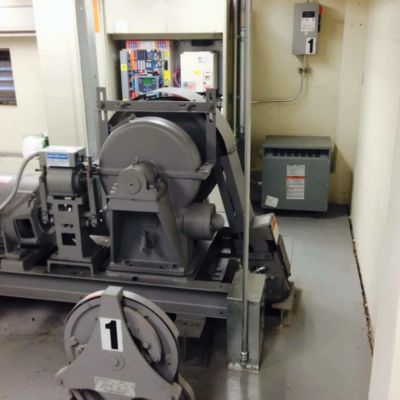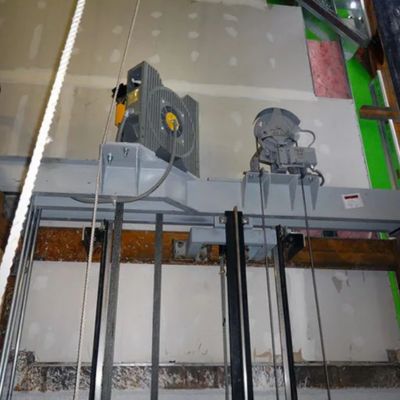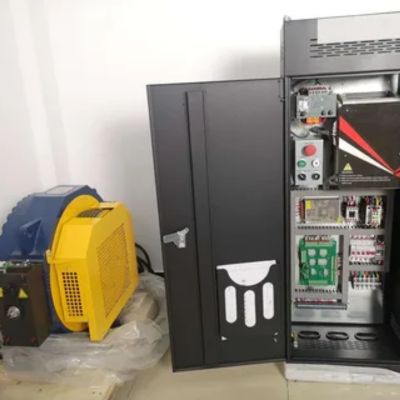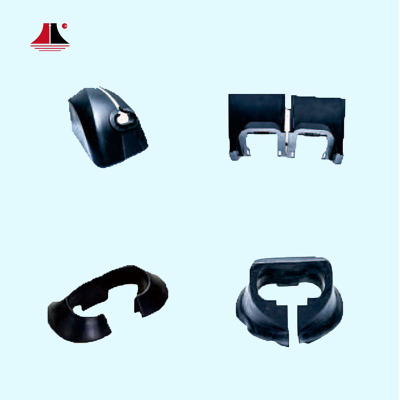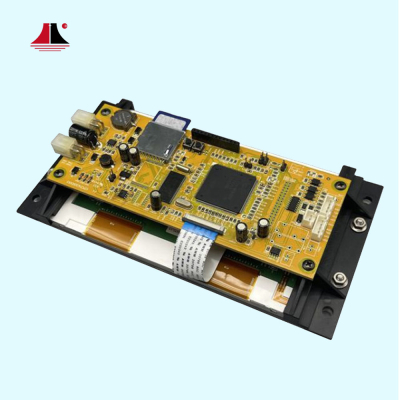What’s an Elevator Machine Room?
When discussing the smooth operation of an elevator, much of the credit goes to a critical yet often overlooked space: the elevator machine room. This essential component is the heart of the elevator system, housing the machinery that powers its movement. Whether you're a building professional or a homeowner planning to install an elevator, understanding what an elevator machine room is and how it functions can be a game-changer in choosing the right solution for your building.
In this guide, we’ll explain the key features, functions, and maintenance tips for elevator machine rooms and explore how they compare to modern alternatives like Machine Room-Less (MRL) elevators. Let’s dive in.
What is an Elevator Machine Room?
An elevator machine room is a designated space that houses the primary mechanical and electrical equipment required to operate an elevator system. Located either above, below, or beside the elevator shaft, this room plays a vital role in ensuring smooth and efficient elevator operations.
Inside the machine room, you'll typically find components like motors, control panels, braking systems, and cooling units. These systems work together to ensure the elevator’s reliable performance while providing easy access for maintenance and repairs.
Why is an Elevator Machine Room Important?
The elevator machine room serves as a critical control center for the entire elevator system. Here are three key reasons why it’s essential:
lOperational Efficiency: By housing all major components in one location, the machine room ensures seamless operations and minimizes the risk of malfunctions.
lSafety and Accessibility: Technicians can safely access equipment for routine inspections and emergency repairs, reducing downtime.
lEquipment Protection: The enclosed space shields machinery from environmental damage, ensuring a longer lifespan for critical components.
Key Components Found in an Elevator Machine Room
Understanding the machinery inside an elevator machine room can help us appreciate its importance. Key components include:
Motor and Drive System: The motor powers the elevator’s movement, while the drive system ensures smooth acceleration and deceleration.
Control Panel: This is the brain of the elevator, responsible for coordinating all operations and safety protocols.
Braking System: Essential for passenger safety, the braking system stops the elevator in case of emergencies or power failures.
Cooling Systems: These prevent the machinery from overheating, ensuring consistent performance.
Types of Elevator Machine Rooms
1. Traditional Elevator Machine Rooms
These are separate rooms located above the elevator shaft (in the case of overhead traction elevators) or beside it (for hydraulic elevators). They require additional space and are commonly used in high-rise buildings.
2. Machine Room-Less (MRL) Elevators
Unlike traditional setups, MRL elevators integrate the machinery into the elevator shaft itself, eliminating the need for a separate machine room. This design is ideal for buildings with limited space and offers a more modern, space-efficient solution.
Building Requirements and Codes for Elevator Machine Rooms
To ensure safety and compliance, elevator machine rooms must meet specific building codes and standards. Key considerations include:
lRoom Size: Sufficient space for equipment and maintenance activities.
lVentilation: Proper airflow to prevent overheating of machinery.
lFire Safety: Fireproof materials and emergency exits to protect occupants and equipment.
Consulting with experienced manufacturers like FUJITA can help you navigate these requirements and ensure compliance.
Maintenance Tips for Elevator Machine Rooms
Regular maintenance is crucial for the longevity and performance of your elevator system. Here are some best practices:
lRoutine Inspections: Schedule regular checks to identify and resolve issues early.
lKeep It Clean: Ensure the room is free of dust, debris, and moisture to avoid equipment damage.
lMonitor Temperatures: Use cooling systems to prevent overheating of machinery.
lCheck Safety Features: Regularly test the braking system and control panel for optimal performance.
Advantages of a Well-Designed Elevator Machine Room
Investing in a well-designed elevator machine room offers several benefits, including:
lEnhanced Safety: Properly installed components reduce the risk of accidents.
lReduced Downtime: Easy access for maintenance ensures uninterrupted service.
lLonger Equipment Lifespan: Protection from environmental factors extends the durability of machinery.
How to Choose the Right Elevator Machine Room Setup
Selecting the right machine room setup depends on your building's size, purpose, and budget. Here’s what to consider:
lSpace Availability: For buildings with limited space, an MRL elevator may be more suitable.
lBuilding Type: High-rise buildings often require traditional machine rooms, while low- to mid-rise structures can benefit from MRL designs.
lExpert Guidance: Partnering with reputable manufacturers like FUJITA ensures you get the best solution tailored to your needs.
Conclusion:
An elevator machine room is the backbone of a functional, reliable, and safe elevator system. Understanding its purpose and maintenance requirements is essential for homeowners and building professionals alike. Whether you’re planning a new installation or upgrading an existing system, choosing the right setup is key to ensuring efficiency and safety.
At FUJITA, we specialize in providing high-quality elevator solutions, including traditional elevators and MRL systems, designed to meet diverse building needs. With our expertise, cutting-edge technology, and commitment to customer satisfaction, we can help you make an informed choice for your project.
Contact us today to learn more about our elevator solutions and how FUJITA can help you achieve the perfect balance of performance, safety, and efficiency in your building.

